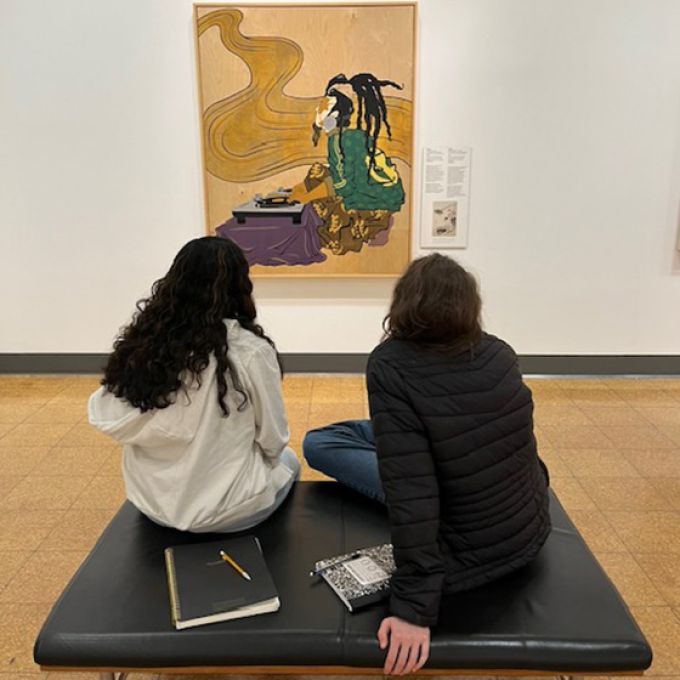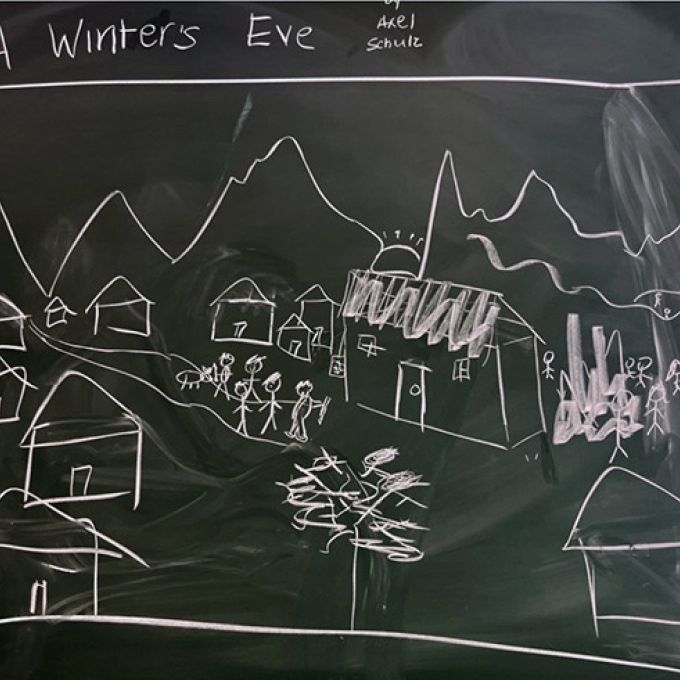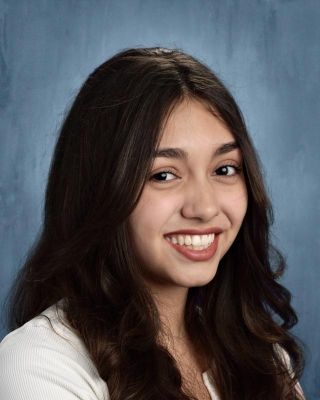

Literary ekphrasis is creative writing that examines, describes, or speaks out of another piece of art. Gaby Guerrero's ('24) "story of learning" below alludes to Axel Schulz's ('24) chalkboard drawing.
If literary ekphrasis were a dance
This year I had the pleasure of working with Liz Young to design and co-teach a new creative writing class at The Gregory School: Literary Ekphrasis. We wanted to create a unique opportunity for students, one devoted to critical thinking and creative writing about art in a collaborative studio environment. That dream became a reality and this semester we meet twice weekly with a talented group of student writers to observe and contextualize visual art by diverse artists, closely read corresponding literary models, and craft our own pieces arising out of all.
Incorporated in our practice is the act of "writing the story of the class,” a way to hold space for both the quotidian experience of each class and the profound, eternal, and shared experience of engaging deeply in conversation with artists and writers across time about what it means to be human.
– Joni Wallace, Writer-in-Residence
Following are two Stories of Learning.
If literary ekphrasis were a dance, then the 28th was a waltz like no other. After the linearity of announcements, we stepped in time to the 3x3 grid of Landscapes and spun around Still Life before entering into the action of Abstraction. Our partner was Nick who decided to take us by the hand and engage the pleasant splatters of a standout Pollock. He twirled us, still talking, about a disgruntled expressionist who flung his brush at the conservative nature of the Cold War. Once a regionalist and now a true artist, Pollock painted with greater action rather than passion as we fantasized the way he swirled around his substantial canvas in the dead of night. We created imagery out of the captivating “Convergence” and studied the stupendous “Number One” and as Pollock was turned to presentation, we ended the day turning his paintings to poetry.

in response to Jackson Pollack
Following the garden path of a virtual art exhibition of the New York Times that had been assigned for homework, students set the book with the little red tassel on their desks, and they pull out their new notebooks or any essential writing utensils they may find necessary.
The class lesson begins with the instructor turning the class’ attention toward a picture of the cubist painting “Senecio” by Paul Klee, accompanied by a small piece of writing underneath. Students unintentionally cut each other off as the class begins to discuss the distinct differences between Auden and Williams’ ekphrastic writing of Breughel.
The class turns its attention next to another Ekphrastic piece written by Williams, “The Hunter in the Snow.” One of the students gets up to attempt depicting visually what the muse in the poem by Williams may look like: icy mountains, dogs, an inn sign, antlers, deserted yard with bonfire, etc.
“The Hunter in the Snow” by Breghuel is finally revealed, and students take their seats on the wooden bench making their best attempts to utilize the proper vocabulary one uses when describing art.
Upon first glance, the class itself might as well have been the bird flying over the village scene, for the painting’s perspective was high enough to make the people toylike. They almost actually appeared to be part of a calico critters toy set. Except they weren’t critters, or toys. They were each a singular person, living a completely different life from their neighbor.
